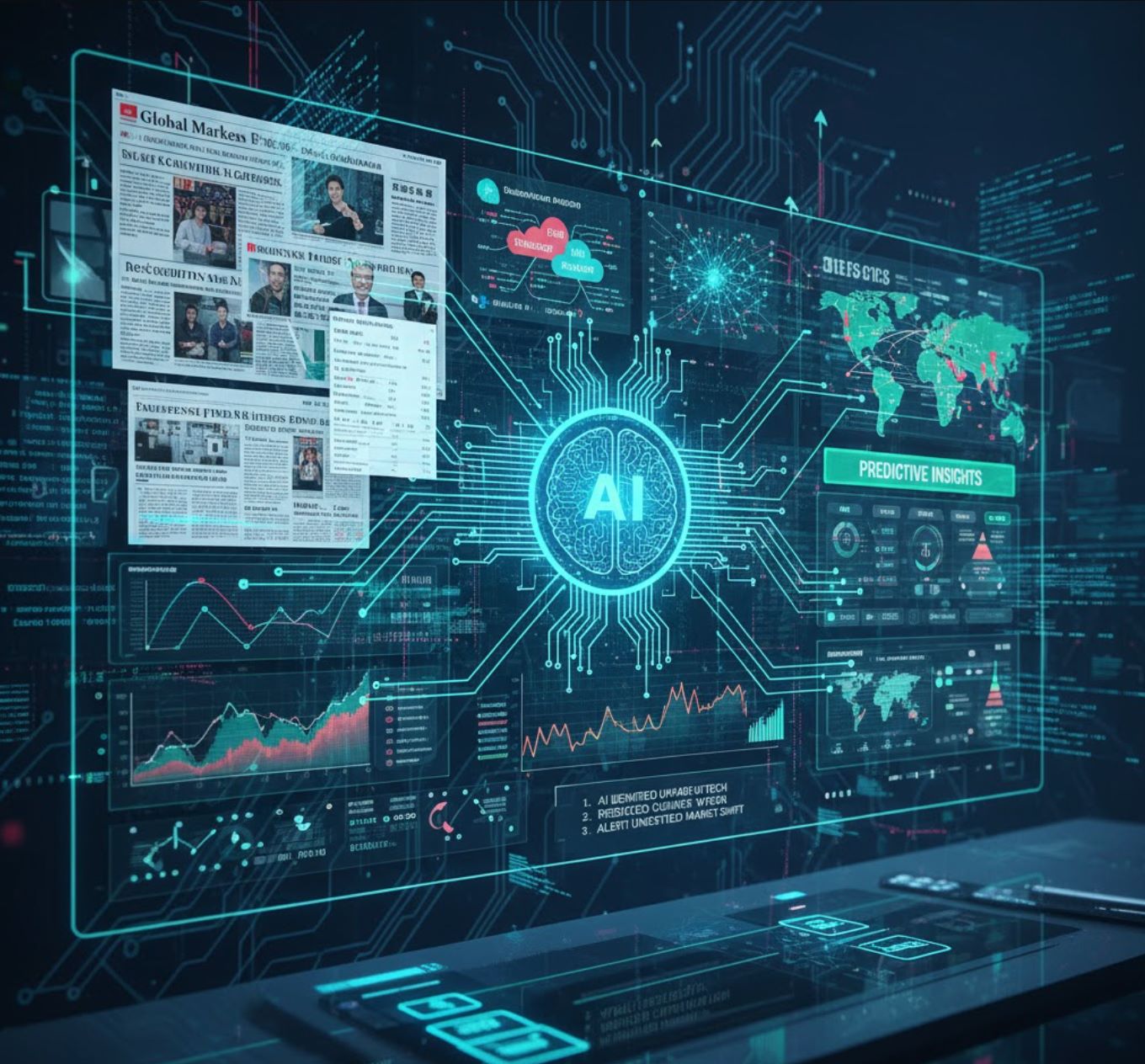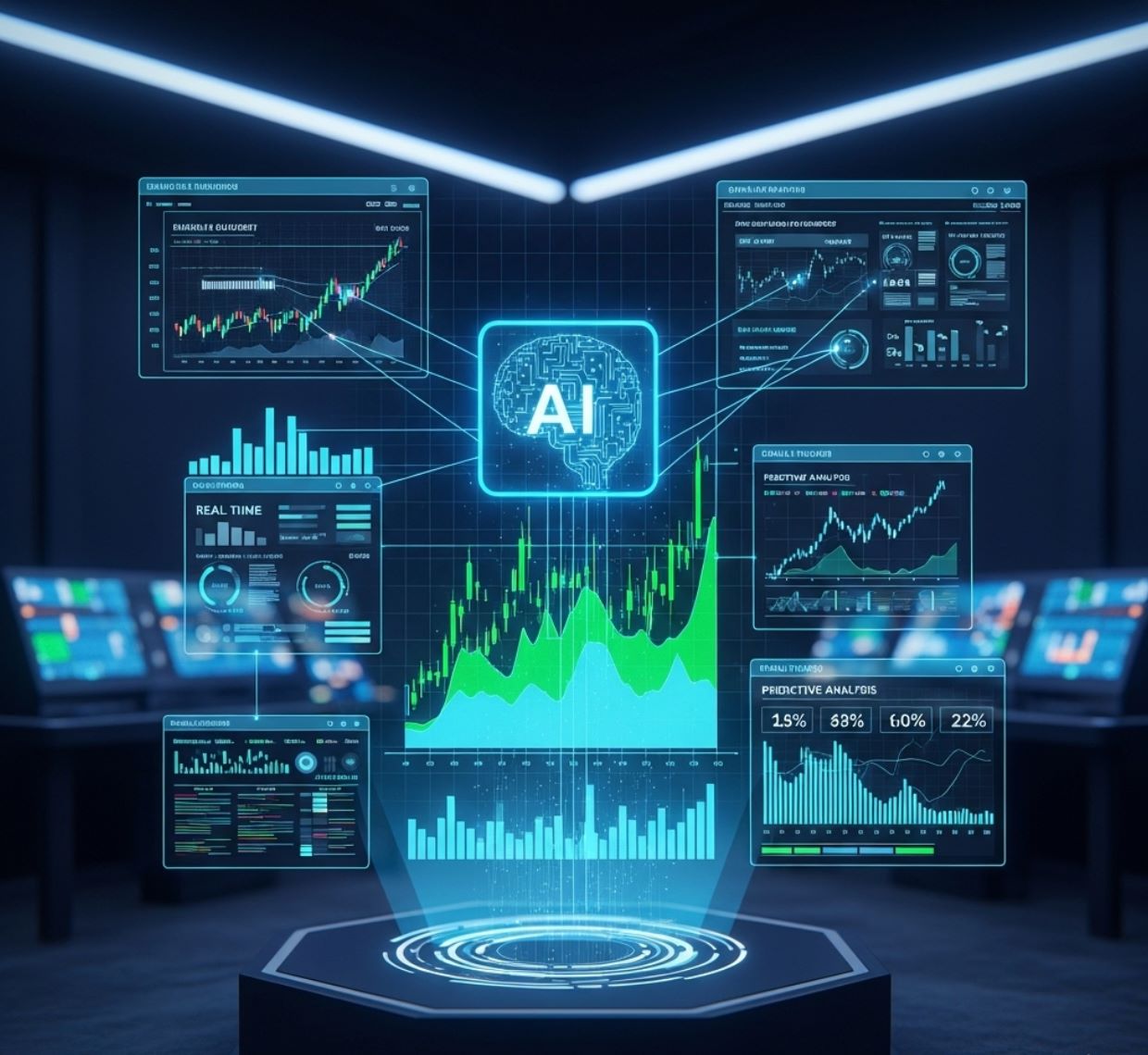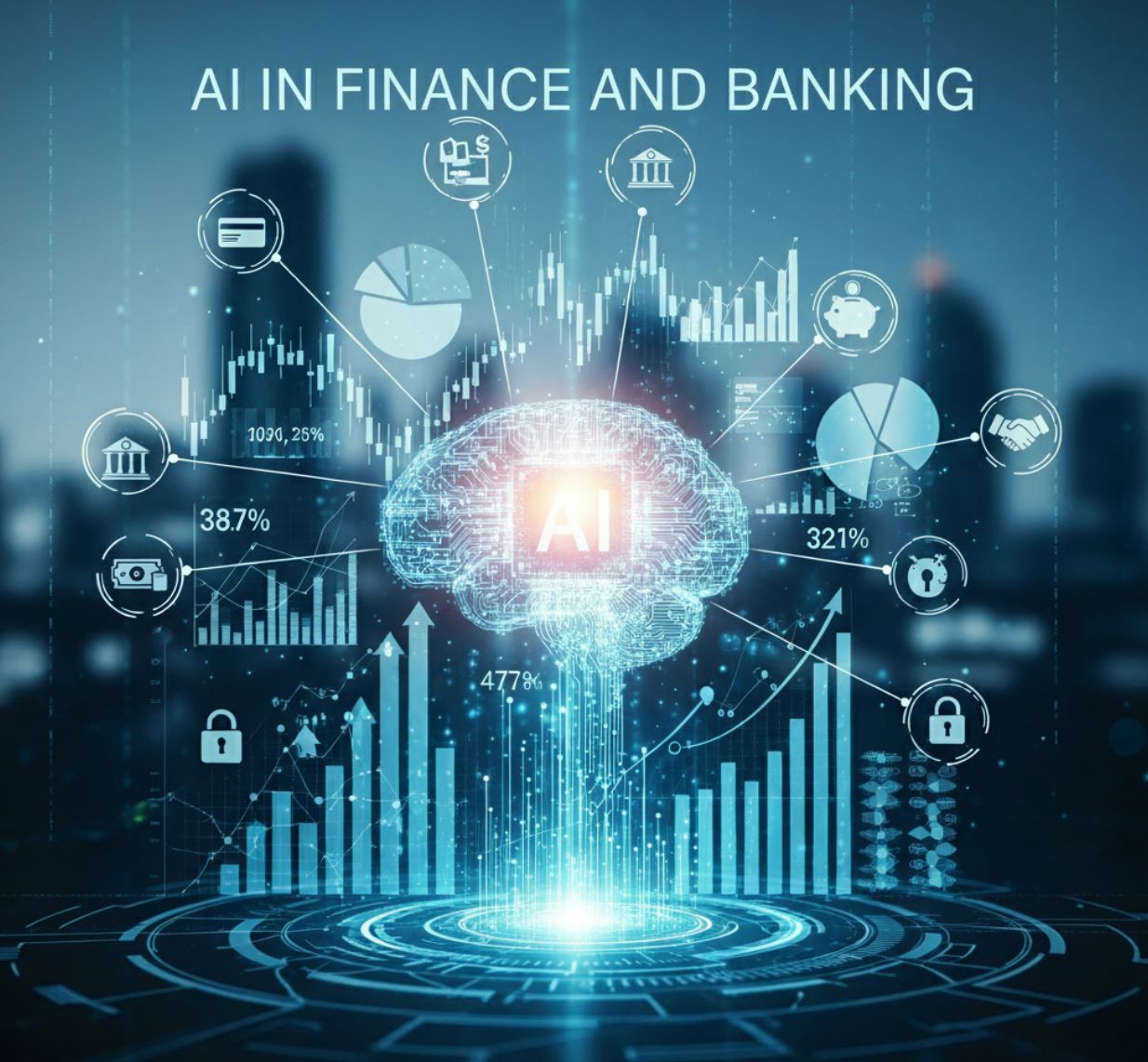AI in Technical Analysis of Stocks
AI enhances technical stock analysis by identifying trends, recognizing price patterns, and providing accurate data to help investors optimize decisions.
Do you want to know what is the application of AI in technical analysis of stocks? Let's find out in this article!
Technical analysis is the study of historical price and volume data to identify patterns and predict future price moves. Analysts use chart formations (e.g. "head and shoulders," triangles), trend lines, moving averages, and oscillators (like RSI or MACD) to spot recurring signals. In other words, they assume past price behavior can hint at future trends.
In recent years, artificial intelligence (AI) and machine learning (ML) have begun augmenting or automating these classic tools. Modern AI systems can scan thousands of charts, recognize complex patterns, and even adapt trading strategies in real time.
Rise of AI and Algorithmic Trading
Stock markets today are dominated by computer-driven trading. In fact, about 70% of U.S. stock trading volume is now executed by algorithmic systems. These traditional algorithms followed fixed rule-based strategies (e.g. "buy if stock falls 3 days in a row"). AI trading represents the next step: instead of hard-coded rules, AI-based methods learn patterns from data.
ML and deep-learning algorithms can process vast data sets – including price history, trading volume, economic news, social sentiment, etc. – and hunt for subtle signals that humans or simple bots would miss. For example, an AI model might parse headlines or social media via natural language processing (NLP) while simultaneously crunching chart indicators, blending "fundamental" context with technical data.
Thanks to big-data tools, an AI system can update its predictions and strategies on the fly as new information arrives.
AIEQ equity ETF consistently outperforms the S&P 500.
— ETF Managers with IBM Watson
Not surprisingly, AI has begun appearing in major financial products. Some ETFs are now AI-powered – for example, the AIEQ equity ETF (run by ETF Managers with IBM Watson) "consistently outperforms the S&P 500," according to its managers.
Even industry leaders like BlackRock are moving in this direction: the firm has deployed fully automated, self-learning algorithms to replace human stock‑pickers in some funds. As one study notes, "big data, AI, factors and models" are increasingly driving investment decisions in place of the "old way" of people picking stocks by intuition.

How AI Enhances Technical Analysis
AI can supercharge traditional chart analysis in several ways:
Automated Pattern Recognition
Modern AI tools can automatically scan price charts for classic patterns. They "look" for complex formations (like double-bottoms, flags, Fibonacci retracements, etc.) across hundreds or thousands of stocks simultaneously.
- Daily trading signals generation
- Real-time strategy adaptation
- Saves time and catches overlooked patterns
Indicator Analysis & Signal Generation
AI models can ingest standard technical indicators (moving averages, Bollinger Bands, RSI, MACD, etc.) and learn to spot the combinations that predict price moves.
- Multi-indicator alignment detection
- Predictive breakout analysis
- Adaptive threshold tuning
Strategy Automation & Backtesting
AI can help traders create or refine trading strategies. Some platforms allow users to describe a strategy in plain English and the AI will code and backtest it.
- Plain English strategy creation
- Automated code generation
- Rapid historical testing
Portfolio & Market Scanning
AI excels at monitoring many markets at once. Specialized scanners can alert traders to conditions like 52-week highs, sudden momentum shifts, or volume breakouts across entire indexes.
- 24/7 market surveillance
- Complex criteria screening
- Real-time opportunity alerts
One recent hybrid study found that a pure machine-learning technical strategy (without human input) delivered exceptionally strong backtested returns on NASDAQ-100 stocks – illustrating AI's raw potential. Researchers emphasize that AI brings "greater precision, flexibility, and context sensitivity" to analysis, strengthening traditional models.
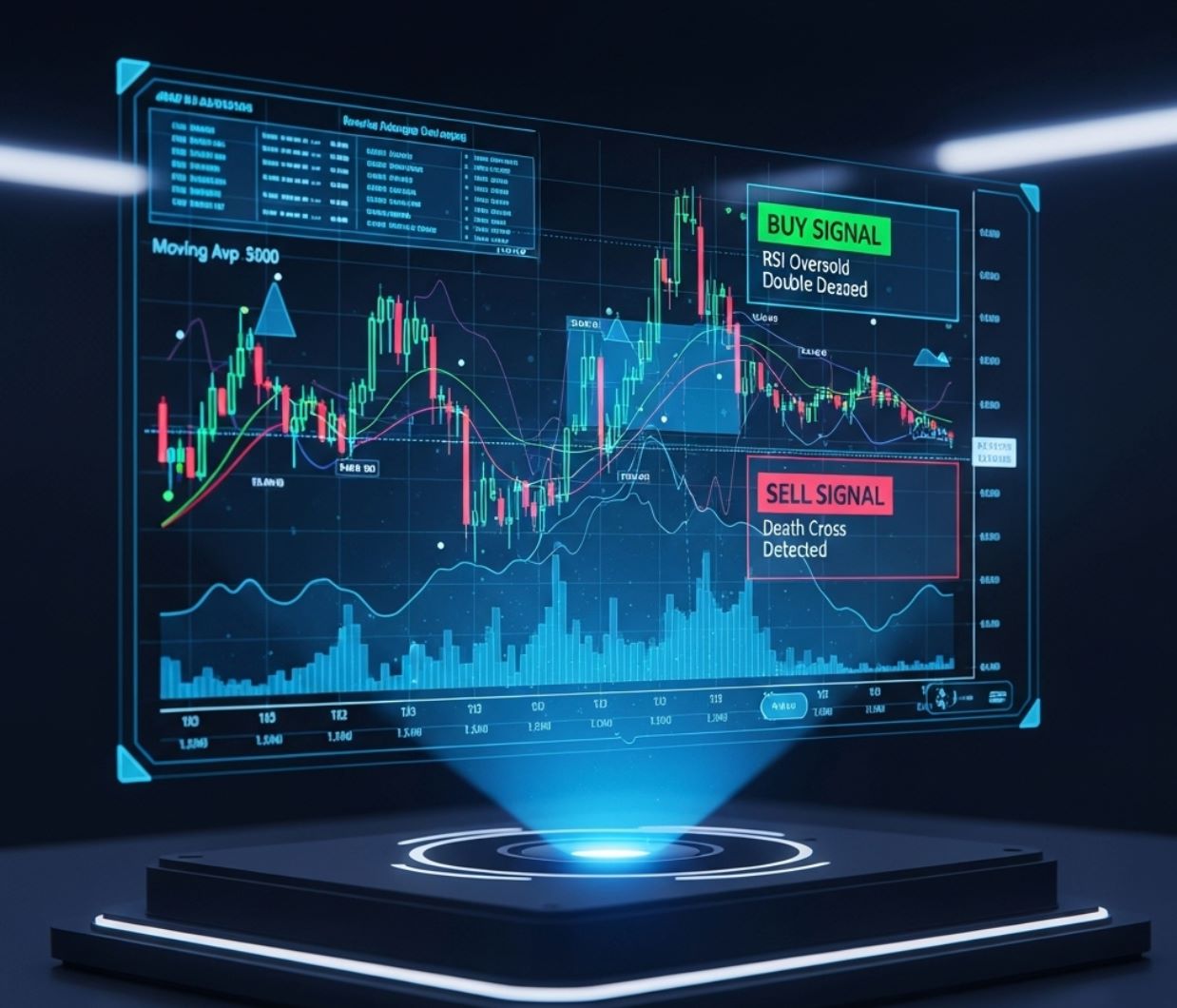
Benefits of AI for Traders
AI's impact on technical analysis can be huge:
Speed & Scale
24/7 Operation
Consistency & Objectivity
Adaptive Learning
Integrating Diverse Data

Challenges and Limitations
Overfitting & False Signals
AI models, especially complex ones (LSTMs, DNNs), can overfit noisy stock data. A recent study found many published ML trading models (like basic LSTM networks) actually produce "false positives" – they appear to work in backtests but fail in real markets.
In other words, a model might find patterns that were just random quirks of historical data. Without careful validation (e.g. out‑of‑sample testing, cross-validation), these models can mislead traders.
"Garbage In, Garbage Out"
AI's quality depends entirely on input data. If the historical price data or news sentiment data is poor, incomplete, or biased, the model's output will suffer.
AI algorithms can only learn from the patterns they see; they won't magically fix bad data.
Unpredictable Market Shocks
Markets are influenced by rare events (like geopolitical crises or pandemics) that are essentially unpredictable. AI trained on past data may struggle with sudden regime shifts.
For example, the 2020 COVID crash fell outside most models' experience and threw many algorithms off. Deep-learning models may not generalize well when a fundamentally new situation arises.
"Hallucinations" and Errors
Particularly with advanced AI (like LLMs), there is a risk of hallucinations – the system confidently generating patterns or relationships that aren't real. An AI might mistake noise for signal.
If unchecked, these errors can lead to bad trades. As one industry guide warns, AI errors in trading "could lead to costly mistakes", so it's crucial to use AI as an aid, not blindly follow it.
Regulatory and Ethical Issues
Using AI in markets brings legal considerations. Firms must comply with data-privacy laws, and regulators closely watch algorithmic trading to prevent market manipulation.
Traders using AI need to ensure their tools obey exchange rules (e.g. not spoofing) and handle data securely. The complexity of advanced AI can also create "black box" models that are hard to audit, which can be a compliance concern.

Examples and Tools
A growing number of platforms now offer AI-enhanced technical analysis features. Some examples include:
Retail Trading Platforms
-
Trade Ideas: A popular trading platform whose AI engine (called Holly) generates daily buy/sell signals and continuously adapts its strategy. Trade Ideas describes Holly as an "AI-powered system" that scans thousands of charts and gives "real-time strategies" each day based on ML.
Premium Feature They even have a premium "Money Machine" tool for end-of-day scans.
-
TrendSpider: A charting and analysis SaaS that offers automated scanners and strategy builders. Traders can use TrendSpider's market scanners to automatically find breakouts, momentum shifts, RSI extremes and other setups across any universe of stocks.
It also lets traders write strategies in plain language (or via a visual interface) and backtest them instantly, reducing the coding barrier.
AI Coding Assistants
As one review notes, "if you're new to coding, an AI chatbot like ChatGPT can help you build a trading bot, making the process more accessible". This human-AI collaboration democratizes technical analysis: now, not only data scientists but also non-programmers can experiment with automated strategies.
Professional & Institutional
- Hedge Funds and Quant Models: In the professional arena, many quant firms employ AI-driven technical models. For example, the crowdsourced hedge fund Numerai uses thousands of outside ML models (many exploiting technical patterns) to drive its trading, and it has achieved strong returns since 2019.
- Robo-Advisors: Even robo-advisor services and large managers are blending technical signals into their AI portfolios (one fintech report notes eToro's ML-driven portfolios mix technical, fundamental and sentiment factors).
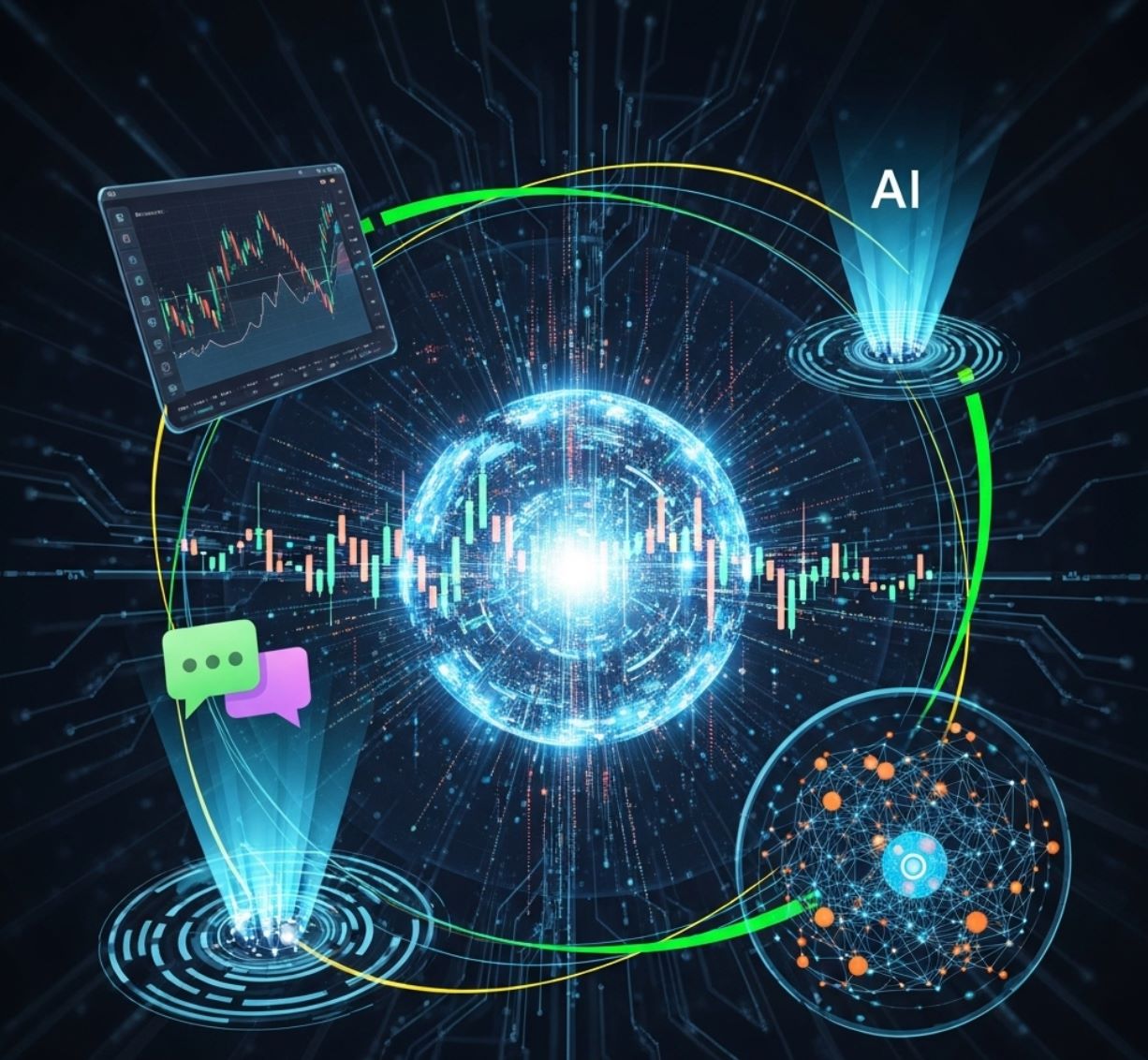
Key Takeaways and Future Outlook
AI is reshaping technical analysis in stocks. By leveraging machine learning, neural networks, and big-data analytics, traders can process more information than ever and find complex patterns at lightning speed.
Manual Methods
- Time-intensive chart review
- Limited pattern recognition
- Emotional decision-making
- Single-market focus
Automated Intelligence
- Millisecond data processing
- Complex pattern detection
- Objective, consistent execution
- Multi-market surveillance
Technical indicators overwhelmingly dominate AI trading research, with most AI trading models focusing on technical analysis using techniques like deep learning.
— Literature Survey on AI Trading Research
Official studies and reviews confirm this trend: one literature survey found that technical indicators overwhelmingly dominate AI trading research (most AI trading models focus on technical analysis, using techniques like deep learning).
The results can be impressive – for example, a pure ML-based technical strategy in one study delivered nearly 20× returns (though such backtests should be taken cautiously).
That said, experts emphasize balance. No algorithm is perfect, so traders should use AI as a sophisticated tool rather than a black-box oracle. In practice, AI can act like a supercharged assistant: flagging opportunities, backtesting ideas, and analyzing data 24/7, while the human trader provides oversight and context.
When used wisely, AI enhances technical analysis; it doesn't replace it.
Current State
AI tools underpin many charting and trading platforms
Future Growth
Even more intelligent integration expected
Human-AI Partnership
Always as complement to solid trading principles
In summary, AI's application in technical analysis is growing rapidly. Cutting-edge ML and NLP tools now underpin many charting and trading platforms, helping to spot trends, generate signals, and automate strategies.
As the technology matures, we can expect even more intelligent integration – but always as a complement to solid trading principles. AI may not be a crystal ball, but it is a powerful lens through which to view market data.



